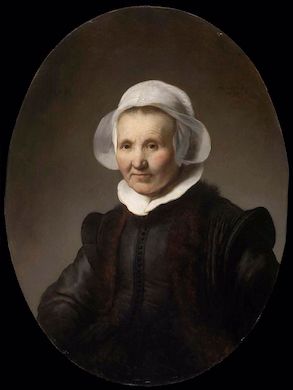A Gift Transforms Boston’s Museum of Fine Arts
One can almost hear the sounds of the place, and there is the uncanny sensation of entering into the consciousness of the artist who lived 350 years ago.

Considering the rarity of great Old Master paintings, the prices, and the limitations of museum budgets, the gift of 113 paintings of the Dutch and Flemish golden age to the Museum of Fine Arts is transformative.
The collections of two couples — Rose-Marie and Eijk van Otterloo, and Susan and Matthew Weatherbie — promised as gifts in 2017, catalyzed this transformation.
Along with that came the acquisition of a famous 20,000-volume library of books on Dutch and Flemish art, and an endowment to establish a center for the study of Netherlandish Art at the museum. Now this center is up and running, and 100 works from the museum’s collection, along with furniture, sculpture, and ship models, have been installed in seven new galleries evoking the Netherlands’ Golden Age.
From the previous holdings of Dutch and Flemish art is the magnificent painting by Rogier van der Weyden of St. Luke, the patron saint of artists, who is seen drawing from life a portrait of the virgin and child as they pose for him. It is wonderful to see it hanging in the context of the new paintings.
The exhibition includes a small Rembrandt of 1628 that shows an artist, perhaps himself, looking across a studio at a panel on which he has been working. It is a spare, utilitarian space with rough board floors and cracked plaster wall — not the elegant and bustling studio of, say, Rubens — but the illumination and atmospherics are exquisite. The artist is dressed in heavy robes.
Behind him is a stone for grinding paint. He holds in his left hand a fist full of brushes, a palette, and his mahlstick, and in his right hand the brush he has been using. Shaded by a hat, his eyes are round spots, his eyebrows elevated as if he is lost in the spaces of his picture but uncertain what the next move on the painting should be. There is a wry humor in that we can never see the painting-in-progress.
Four years later, Rembrandt painted the most successful portrait ever painted — if the purpose is to capture and carry on the living image of a person. I remember when I first saw it. I was startled by not realizing there was someone so close looking at me. This is Rembrandt, painting with light by limiting color.
There is one spot on the collar, which is pure white, but all the other whites are slightly less illuminated, giving a shadowy sense of atmosphere enveloping the figure. It is Aeltje Uylenburgh, the older cousin of Saskia, who became Rembrandt’s wife. This may be the best painting in the vast holdings of the Museum of Fine Arts.

Now there is a fine collection of Ruisdael landscapes, and phenomenal still lifes. I am haunted by a painting by Jan van der Heyden, “View of the Westerkerk, Amsterdam.” In the foreground a man is sitting on a barge framed by a bridge crossing the canal. The church is across the canal and seen through trees. There are shops on the street level of buildings, women walking with children. There is a butcher shop with a carcass hanging in the door to a stall. To the right a gentleman is relieving himself against the wall. One can almost hear the sounds of the place, and there is the uncanny sensation of entering into the consciousness of the artist who lived 350 years ago. This is the alchemy of painting. Don’t miss the chance to go and explore the visions of 17th century Holland, traveling a bit in time and space at the MFA.
Tomorrow, watch for Sharon Lorenzo on the romance that produced one of the greatest gifts in the history of art.

